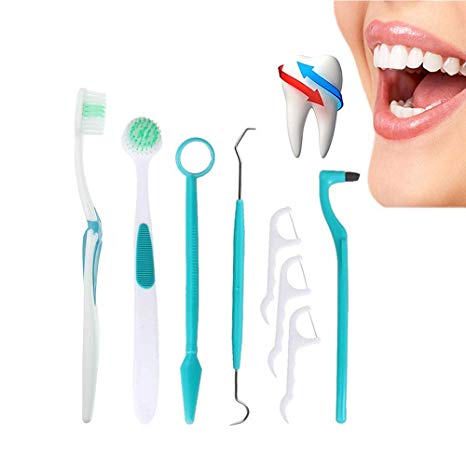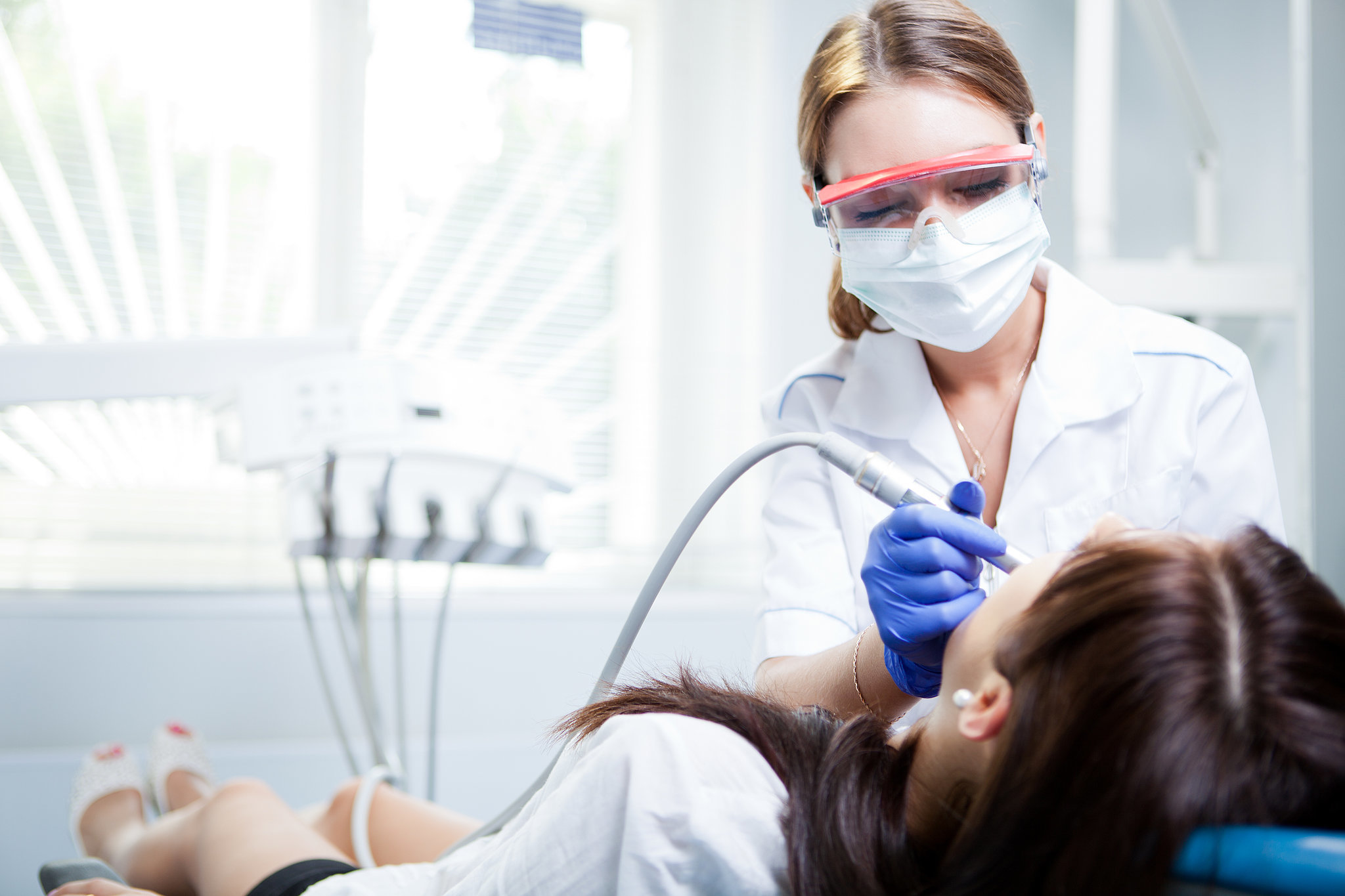Want to make sure you’re ready for your next bi-annual dental hygiene checkup? Follow this 10 point checklist at HR Family Dental in Highlands Ranch, CO.
Problems that can occur from Poor Dental Hygiene
Oral hygiene is the practice of keeping one’s mouth clean and free of disease and other problems (e.g. bad breath) by regular brushing of the teeth (dental hygiene) and cleaning between the teeth. It is important that oral hygiene is carried out on a regular basis to enable the prevention of dental disease and bad breath. The most common types of dental disease are tooth decay (cavities, dental caries) and gum diseases, including gingivitis, and periodontitis.[1]
10 Point Checklist for Optimal Dental Hygiene and Dental Health
- Tooth brushing: Routine tooth brushing is the principal method of preventing many oral diseases, and perhaps the most important activity an individual can practice to reduce plaque buildup.[15] Controlling plaque reduces the risk of the individual suffering from plaque-associated diseases such as gingivitis, periodontitis, and caries – the three most common oral diseases.[16] The average brushing time for individuals is between 30 seconds and just over 60 seconds.[17][18][19][20][21][22] Many oral health care professionals agree that tooth brushing should be done for a minimum of two minutes, and be practiced at least twice a day.[23] Brushing for at least two minutes per session is optimal for preventing the most common oral diseases, and removes considerably more plaque than brushing for only 45 seconds[15][23]
- Flossing: Tooth brushing alone will not remove plaque from all surfaces of the tooth as 40% of the surfaces are interdental.[2] One technique that can be used to access these areas is dental floss. When the proper technique is used, flossing can remove plaque and food particles from between the teeth and below the gums. The American Dental Association (ADA) reports that up to 80% of plaque may be removed by this method.[31] The ADA recommends cleaning between the teeth as part of one’s daily oral hygiene regime.[31]
- Interdental brushes: Interdental brushes come in a range of color-coded sizes. They consist of a handle with a piece of wire covered in tapered bristles, designed to be placed into the interdental space for plaque removal.[1] Studies indicate that interdental brushes are equally or more effective then floss when removing plaque and reducing gum inflammation.[1]The steps in using an interdental brush are as follows:[1]
- Identify the size required, the largest size that will fit without force is ideal Often more than one size is required in the mouth.
- Insert the bristles into the interdental space at a 90-degree angle.
- Move the brush back and forth between the teeth.
- Rinse under water to remove debris when necessary.
- Rinse with warm soapy water once complete, and store in a clean dry area.
- Replace once bristles are worn.

- Tounge Scrapper: The tongue contains numerous bacteria which causes bad breath. Tongue cleaners are designed to remove the debris built up on the tongue. Using a toothbrush to clean the tongue is another possibility, however it might be hard to reach the back of the tongue and the bristles of the toothbrush may be too soft to remove the debris. Some may find it easier to use a tongue scraper instead because it does not tend to cause a gag reflex as readily as a toothbrush.[1] Steps of using a tongue scraper:
- Rinse the tongue scraper in order to clean it and remove any present debris
- Start at the back of the tongue and gently scrape forwards
- Be sure to clean the sides of the tongue as well, not just the middle portion
- After the cleaning is completed, rinse the tongue scraper and any debris that is left behind
- Rinse the mouth[33]
- Oral Irrigation: Some dental professionals recommend subgingival irrigation as a way to clean teeth and gums.[34][35][36][37]
- Single-tufted brushes: Single-tufted brushes are a tool in conjunction with tooth brushing.[38] The tooth brush is designed to reach the ‘hard to reach places’ within the mouth. This tool is best used behind the lower front teeth, behind the back molars, crooked teeth and between spaces where teeth have been removed.[3] The single- tufted brush design has an angled handle, a 4mm diameter and rounded bristle tips.[3]
- Gum stimulators: Toothbrushes with pointed rubber tips at the ends of the handles have been available for many years, and have more recently been replaced by a standalone tool called a gum stimulator designed to massage the gum line and the bases of the areas between the teeth. Such stimulators help to increase circulation to the gum line and to clear away bacteria which might not be removed by brushing and flossing alone.[39]
- Mouthwash: Essential oils, found in Listerine mouthwash, contains eucalyptol, menthol, thymol, and methyl salicylate. CPC containing mouthwash contains cetyl pyridinium chloride, found in brands such as Colgate Plax, Crest Pro-Health, Oral B Pro-Health Rinse. In meta-analyses completed in 2016, EO and CPC mouthrinses were compared and it was found that plaque and gingivitis levels were lower with EO mouth rinse when used as an adjunct to mechanical plaque removal (toothbrushing and interdental cleaning).[50]
- Chewing Gum: Chewing gum assists oral irrigation between and around the teeth, cleaning and removing particles, but for teeth in poor condition, it may damage or remove loose fillings as well. Dental chewing gums claim to improve dental health. Sugar-free chewing gum stimulates saliva production and helps to clean the surface of the teeth.[42]
- Healthy Eating: Foods that help muscles and bones also help teeth and gums. Vitamin C is necessary, for example, to prevent scurvy which manifests as serious gum disease. Eating a balanced diet and limiting sugar intake can help prevent tooth decay and periodontal disease.[citation needed] The Fédération dentaire internationale (FDI World Dental Federation) has promoted foods such as raw vegetables, plain yogurt, cheese, or fruit as dentally beneficial—this has been echoed by the American Dental Association (ADA).[40]
#1 way to keep your teeth and mouth healthy: Visit your dentist!
Schedule Your Appointment Today
Give us a call today at 303-346-4495 or email us at [email protected] to schedule your first visit. We would love to work with you toward a better, brighter smile.
[contact-form-7 id=”6″ title=”Contact form 1″]



